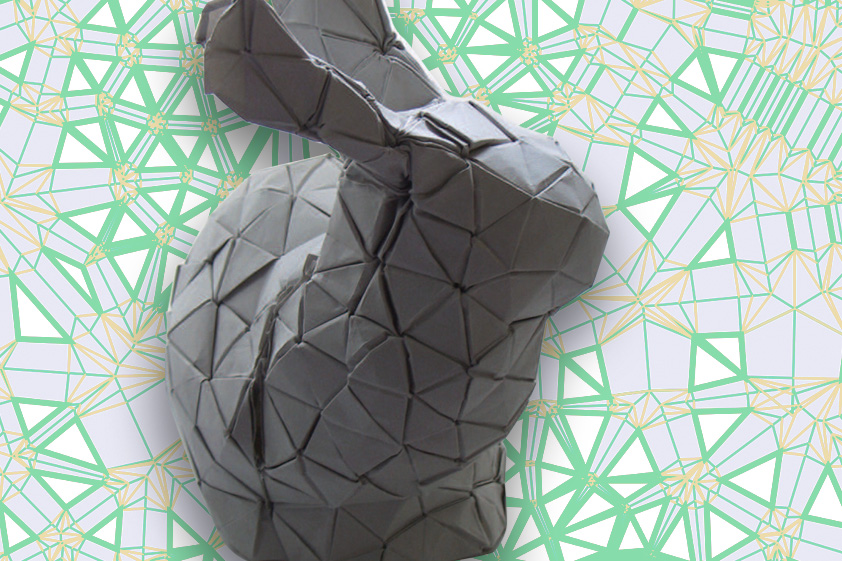To Create for the Ages Lets Combine Art and Engineering
Art/Design in Engineering
In history, some of the greatest structural marvels are a cute cusp of applied science and art. Take the Pantheon for instance. Its dome was built around 100AD without using a single rod of steel. And even so stands tall in Rome. How? Click on the link to understand how art played a crucial role in creating such engineering marvels.
The greatest artist of all fourth dimension, Leonardo Da Vinci was an engineer in an artist's body. Read the article to notice out more:
Even in today'southward technology-driven world, pioneers in infinite innovations such equally NASA uses origami to design prototypes of spacecraft. Scout the video to experience information technology!
Gradually even the STEM curriculums worldwide are changing to STEAM where 'A' stands for Arts. To find out read the article:
Some other example of a beautiful culmination between engineering science and fine art in this video. It is about skeletal beests called 'Strandbeests'.
Fifty-fifty the summit universities like Carnegie Mellon University (CMU) take introduced a new caste path combining Technology and Art in creative means.
Read the commodity to sympathise how an engineering student Caroline Hermans in CMU has explored, combining her interests for both art and technology.
Read the article to learn more about amazing projects made by the students of Princeton University, who found creativity at the intersection of fine art and technology.
It'southward interesting to read that manus-drawing is making an unlikely improvement. Designers and engineers have found that the creative process is merely not as intuitive when the delicate human relationship between the brain, eye, and mitt is mediated by a computer.
Reflection Question/s
All the IVY League Colleges in the The states started as liberal fine art universities. Withal, they offer some of the best programs in difficult sciences. Discuss.
Project 1: Pattern a Faucet Paradigm
If you are an artist, become hold of a friend who is thinking of pursuing engineering or vice versa and together make a prototype of a 'faucet'. Lookout the video and then design a kitchen/bathroom faucet in such a way that solves a specific problem.
Projection 2: Origami Machine
Create an 'Origami Project - Paper Motor Walking Machine' by referring to the link.
Project iii: Choice Your Own Mini Projection
Mini Projects are curt projects to help you lot further explore and strengthen the agreement of fundamentals covered in the module. Care for them every bit stepping stones to practise bigger projects subsequently. The elapsing to complete such projects shouldn't be more than 4-5 hours.
Pick a topic that piques your interest related to the learning areas covered in the module. The topic should exist such that it encourages research, promotes inquiry, and adds to your knowledge in the specific surface area. Your projects may include:
- Written/audio/video presentations
- Belittling written/audio/video essays
- Creating mood boards
- Designing prototypes
- Anything of your choice

Project 1: Computational Origami
An MIT professor Erik Demaine has spent most 20 years perfecting a highly-efficient algorithm that allows any 3D shape to be reproduced as origami. Demaine has also collaborated with Tomohiro Tachi, to implement the algorithm in a new version of "Origamizer", the free software for generating origami crease patterns whose first version Tachi released in 2008. Delight download the software and experiment with origami.
Project 2: Fine art & Technology Collaboration
Make a project including Art/Pattern in Engineering. Hackerspaces are the best places to detect a community of people that are interested in combining technology and art and can help y'all to learn and expand your interest. The article lists some of the best Hackerspaces in Republic of india.
Project 3: Pick Your Own Skill Building Project
Skill Building Projects are longer projects to encourage further inquiry and build your skill set. The list may include building skills in engineering, finance, advice, computer programming, problem solving, decision-making, creativity, business, networking, writing, learning, self-sensation, or public speaking. The elapsing to complete such projects is normally 300 hours or more than.
Choice a topic that piques your interest related to the learning areas covered in the module. The topic should be such that information technology encourages research, promotes inquiry, adds to your knowledge in the specific surface area. Your projects may include:
- Designing prototypes
- Creating a production
- Completing an online course
- Completing a reading list and write book reviews
- Creating Wikipedia pages
- Managing a blog
- Participating in national/international competitions
- Joining an internship program
- Anything of your choice
While choosing your skill-edifice projects proceed the smart objectives philosophy in heed. Your project should ideally be related to your long-term interest. A good project focuses on finding better solutions, not simply bigger ones for challenges in a community. So, effort and create a project that tin be executable in your community level, which may be your domicile, neighborhood, school, or college.

Become free access to 100+ online learning modules
Join over 10,000+ people discovering new ideas on ACadru.
masseywounieve1981.blogspot.com
Source: https://acadru.com/view/art-design-in-engineering










ارسال یک نظر for "To Create for the Ages Lets Combine Art and Engineering"